Class 9 History Chapter 5 Notes - Pastoralists in The Modern World
| Table of contents |

|
| Introduction |

|
| Pastoral Nomads and their Movements |

|
| Colonial Rule and Pastoral Life |

|
| Pastoralism in Africa |

|
| Conclusion |

|
| Difficult Words |

|
Introduction
Nomads form a unique group characterized by their mobile lifestyle, continuously moving in search of livelihood.
- Nomad people depend primarily on animal rearing. Goats, sheep, camels, and buffaloes are the main animals reared by the nomads. Some of the nomads also cultivate crops.
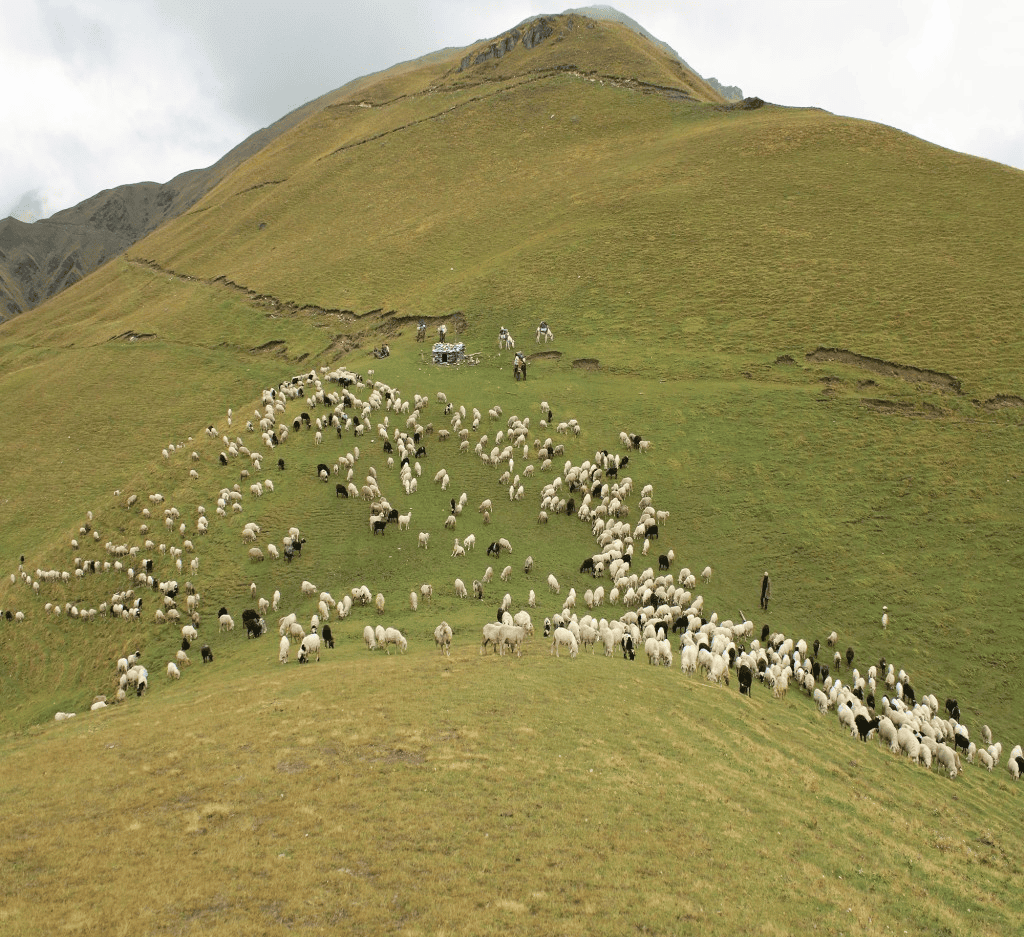 Sheep grazing on the Bugyals of Eastern Garhwal
Sheep grazing on the Bugyals of Eastern Garhwal
- Movements: Nomads do not move randomly across the landscape but have a strong sense of territoriality. They are aware of the physical and cultural characteristics of the region of their movement.
- Food: Pastoral nomads consume mostly grain rather than meat. They consume wheat, rice, bajra, and maize. Some of the food grains are grown by themselves, and some are arranged from the path of their movement.
- Economic life: Most of the nomadic people follow a barter system, though some use money also. They exchange animals for food or grains.
- Selection of animal: Nomads select the type and number of animals for the herd according to local cultural and physical characteristics. The choice depends on the relative prestige of animals and the ability of species to adapt to particular climates and vegetation. The camel is most frequently desired in North Africa and the Middle East, followed by sheep and goats.
In this chapter you will see how pastoralism has been important in societies like India and Africa.
Pastoral Nomads and their Movements
In the Mountains
The Gujjar Bakarwals:- Traditionally herders of goats and sheep, known for their nomadic lifestyle.
- Migrated to Jammu and Kashmir in the 19th century in search of better pastures.
- Followed a cyclical migration pattern, moving between summer and winter grazing grounds.
- Spent winters in the low hills of the Siwalik range, where dry scrub forests provided grazing land.
- By late April, they migrated northward in groups (called kafilas) to their summer pastures in the lush green mountains of Kashmir, benefiting from the nutritious grasses.
- Returned to their winter grazing grounds by late September as the mountains became snow-covered.
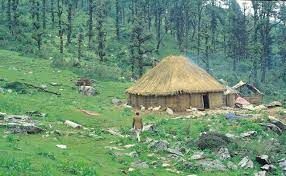 A Gujjar Mandap on the high mountains in central Garhwal.
A Gujjar Mandap on the high mountains in central Garhwal.
The Gaddi shepherds:
- Winter Grazing: Gaddi shepherds of Himachal Pradesh spent their winter in the low hills of the Shiwalik range, grazing their flocks in scrub forests.
- Summer Movement: By April, they moved north to spend the summer in Lahul and Spiti. When the snow melted and the high passes were clear, they moved to higher mountain meadows.
- Harvesting and Sowing: By September, they began their return journey, stopping in the villages of Lahul and Spiti to reap their summer harvest and sow their winter crop.
- Return to Winter Grounds: Descended to their winter grazing grounds in the Siwalik hills, repeating the cycle annually.
Movement in Garhwal and Kumaon:
- Migrated from Jammu to the hills of Uttar Pradesh (now Uttarakhand) in the 19th century in search of good pastures.
- Wintered in the dry forests of the bhabar region.
- In summer, moved to the high-altitude meadows, known as bugyals, where their cattle grazed on the rich alpine vegetation.
Other Pastoral nomads:
- Other pastoral groups like the Bhotiyas, Sherpas, and Kinnauris followed similar patterns of cyclical migration.
- Seasonal movement was essential for adapting to changing climatic conditions and making the best use of available pastures in different regions.
- When pastures were depleted or unusable in one area, they moved to new regions, allowing the grasslands to recover and preventing overgrazing.
Let's Revise
Q: Describe the migration pattern of the Gujjar Bakarwals and explain how it was adapted to seasonal changes.
 View Answer
View Answer 
Ans: The Gujjar Bakarwals practiced cyclical migration, wintering in the low hills of the Siwalik range and moving to the green pastures of Kashmir in summer. This seasonal movement allowed them to adapt to climate changes and ensure their livestock had access to grazing grounds year-round.
Q: How did the Gaddi shepherds manage their livelihood through seasonal migration?
 View Answer
View Answer 
Ans: The Gaddi shepherds of Himachal Pradesh spent winters grazing in the Shiwalik hills and moved to Lahul and Spiti in summer. They harvested crops in September before returning to winter grounds, maintaining a cycle that balanced pastoralism with agriculture.
On the Plateaus, Plains and Deserts
The Dhangars:
- Important pastoral community with a population of approximately 467,000 in the early 20th century.
- Primarily shepherds, but some were blanket weavers and buffalo herders.
- Stayed in the semi-arid central plateau of Maharashtra during the monsoon, grazing their flocks on bajra fields.
- By October, they migrated west to the Konkan region, a fertile agricultural area with high rainfall.
- Their sheep manured the fields after the kharif harvest, preparing them for rabi crops, and in return, they received rice from Konkani peasants.
- Returned to the plateau before the onset of the next monsoon as their sheep couldn't tolerate wet conditions.
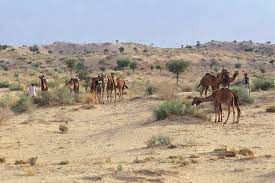 Raika camels grazing on the Thar desert in western Rajasthan.
Raika camels grazing on the Thar desert in western Rajasthan.
The Gollas, Kurmas, and Kurubas:
- In Karnataka and Andhra Pradesh, the dry central plateau was covered with grass inhabited by cattle, goat, and sheep herders.
- Gollas: Cattle herders.
- Kurumas and Kurubas: Sheep and goat rearers, also known for weaving and selling blankets.
- Lived near woods, cultivated small land patches, and engaged in various trades.
- Seasonal migration driven by the monsoon cycle: moved to coastal regions in the dry season and returned to the plateau during the wet monsoon.
Banjaras: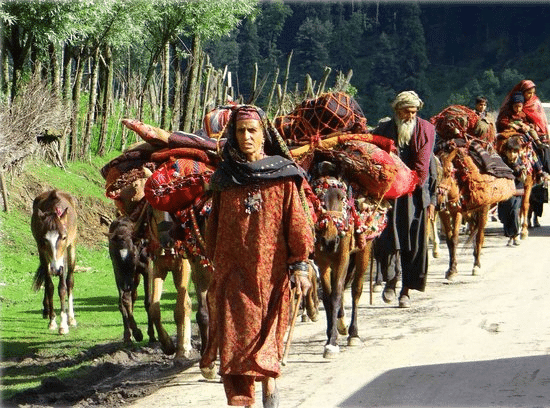 Banjaras
Banjaras
- Well-known group of graziers found in Uttar Pradesh, Punjab, Rajasthan, Madhya Pradesh, and Maharashtra.
- Nomadic, traveled long distances in search of good pastures for their cattle.
- Engaged in trade, selling plough cattle and goods in exchange for grain and fodder.
The Raikas:
- Raikas were the nomads of Rajasthan. They were divided into two groups. One group of Raikas-known as the Maru Raikas-herded camels, and another group reared sheep and goats. Cultivation and pastoralism were their primary activities.
- During the monsoon, they stayed in their home villages where pasture was available.
- By October, when these grazing grounds were dry and exhausted, they moved out in search of other pastures and water.
Let's Revise
Q: How did the Dhangars of Maharashtra adapt their lifestyle to the seasonal changes in their environment?
 View Answer
View Answer 
Ans: The Dhangars stayed in the semi-arid plateau of Maharashtra during the monsoon and migrated to the Konkan region by October. Their sheep grazed and manured the fields after harvest, and in return, they received rice from the local peasants. They returned before the next monsoon as their sheep could not tolerate wet conditions.
Q: Describe the livelihood strategies of the Raikas of Rajasthan.
 View Answer
View Answer 
Ans: The Raikas, divided into camel-herding Maru Raikas and sheep-goat rearers, practiced both pastoralism and cultivation. They stayed in their villages during the monsoon when pastures were available and migrated in October in search of fresh pastures and water.
Life of Pastoral Groups
- Sustained by consideration of factors like duration in one area, water, and pasture.
- Calculated movement timing, and established relationships with farmers for grazing.
- Engaged in cultivation, trade, and herding for livelihood.
Colonial Rule and Pastoral Life
Transformation of Grazing Lands
- Colonial state sought to transform grazing lands into cultivated farms to increase land revenue.
- "Waste Land Rules" were enacted from the mid-19th century, converting uncultivated lands (often used by pastoralists) into agricultural lands.
- Decline in pastures due to expansion of cultivation created challenges for pastoral communities.
Forest Acts
- Forests were classified as "Reserved" or "Protected," restricting pastoralists' access.
- Customary grazing rights were limited, and movement within forests was regulated.
- Officials believed grazing harmed tree growth, affecting pastoralists who relied on forest forage.
Regulation of Pastoral Movements
- Forest Department permits controlled pastoralists' entry, specifying timing and duration.
- Pastoralists faced fines if they overstayed, disrupting their traditional mobility for grazing.
Waste Land Rules
Under the Waste Land Rule, uncultivated land was brought under cultivation. The basic aim was to increase land revenue because by expanding cultivation, the Government could increase its revenue collection. Crops like jute, cotton, and indigo were used as raw materials in England. So, the British government wanted to bring more and more areas under these crops.
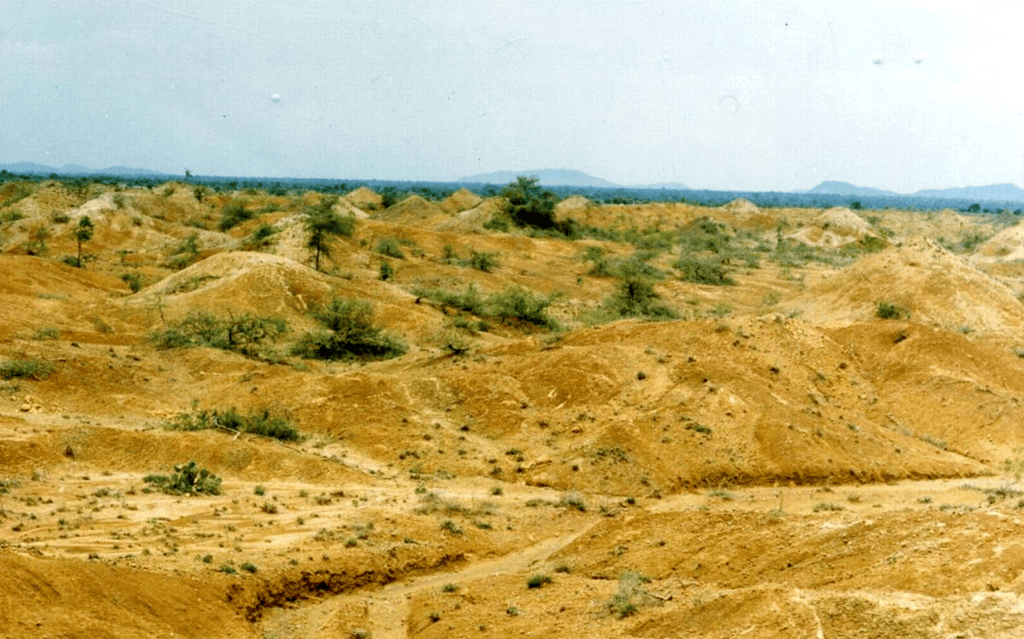 WasteLand
WasteLand
Impact on the lives of the pastoralists:
(i) After the Act, pastoral movements were restricted.
(ii) Under the Act, the grazing land was given to big landlords. Due to this, nomads' grazing grounds shrank.
(iii) Due to shrinking grazing grounds, the agricultural stock of the nomads declined, and their trade and crafts were adversely affected.
Settlement Policies
- British officials preferred settled populations, distrusting nomadic lifestyles.
- The Criminal Tribes Act (1871) classified mobile communities as criminal, restricting their movement.
 Pastoralists in India
Pastoralists in India
Criminal Tribes Act
- In 1871, the colonial government in India passed the Criminal Tribes Act. By this Act, many communities of craftsmen, traders, and pastoralists were classified as Criminal tribes.
- They were stated to be criminals by nature and birth. Once this Act came into force, these communities were expected to live only in notified village settlements.
- They were not allowed to move out without a permit. The village police kept a continuous watch on them. This restricted their grazing grounds.
- Their agricultural stock declined, and their trades and crafts were adversely affected.
Taxation Policies
- The colonial government imposed taxes on various resources, including land, water, salt, trade goods, and animals.
- Pastoralists faced grazing taxes, auctioned to contractors in the mid-19th century, and later collected directly by the government.
Grazing Tax
- Imposed on pastoralists: Pastoralists had to pay tax on every animal they grazed on the pastures.
- Introduction: A grazing tax was introduced in the mid-nineteenth century.
- Tax increase: The tax per head of cattle went up rapidly, and the system of collection was made increasingly efficient.
- Contractor system: Between the 1850s and 1880s, the right to collect the tax was auctioned out to contractors.
- Profit extraction: Contractors tried to extract as high a tax as they could to recover the money paid to the state and earn as much profit as possible.
- Direct collection: By the 1880s, the government began collecting taxes directly from the pastoralists.
- Pass system: Each pastoralist was given a pass. To enter a grazing tract, a cattle herder had to show the pass and pay the tax. The number of cattle heads and the amount of tax paid was recorded on the pass.
How Did These Changes Affect the Lives of Pastoralists?
- Shortage of Pastures:
- Grazing lands were reduced as they were converted into cultivated fields.
- Forest reservation restricted pastoralists' access to previously available forest pastures.
- Intensive Grazing:
- With fewer grazing areas available, pastoralists were forced to continuously graze their animals on limited land.
- Lack of movement opportunities disrupted the natural recovery of vegetation, leading to overgrazing and depletion of pasture quality.
- Decline in Animal Stock:
- Continuous grazing on diminished pastures led to a shortage of forage.
- Weakened animals faced higher mortality rates, particularly during times of scarcity and famine, further diminishing livestock numbers.
How Did the Pastoralists Cope with These Changes?
1. Reduction in Herd Size:
- Pastoralists faced with limited pasture reduced the number of cattle in their herds.
- The scarcity of grazing lands influenced their decision to downsize their herds.
2. Exploration of New Pastures:
- Pastoralists sought new grazing areas when traditional grounds became inaccessible due to various reasons, such as political boundaries.
- For example, camel and sheep herding Raikas had to find alternative places for grazing after 1947 due to new political boundaries between India and Pakistan.
3. Shift to Sedentary Life:
- Some wealthier pastoralists opted for settled life by purchasing land and abandoning their nomadic lifestyle.
- This transition included becoming settled peasants engaged in cultivation or taking up extensive trading.
4. Financial Adaptations:
- Poor pastoralists faced financial challenges and often borrowed money from moneylenders to survive.
- At times, they lost their livestock, forcing them to become laborers working in fields or small towns.
5. Adaptation and Diversification:
- Despite challenges, pastoralists adapted by changing the direction of their movement and reducing herd sizes.
- They combined pastoral activities with other forms of income to adapt to changes in the modern world.
- Ecologists argue that pastoralism remains ecologically viable, especially in dry regions and mountains.
Pastoralism in Africa
- Over half of the world's pastoral population resides in Africa.
- Presently, more than 22 million Africans depend on pastoral activities for their livelihoods.
- Communities such as Bedouins, Berbers, Maasai, Somali, Boran, and Turkana engage in pastoral activities.
- The majority of African pastoralists inhabit semi-arid grasslands or arid deserts where rainfed agriculture is challenging.
- African pastoralists raise a variety of animals, including cattle, camels, goats, sheep, and donkeys.
- They derive livelihood by selling products like milk, meat, animal skin, and wool.
- Pastoralists employ diverse economic strategies, combining pastoral activities with agriculture, engaging in trade and transport, and taking up odd jobs to supplement income.
 Pastoral Communities in Africa
Pastoral Communities in Africa
Where have the Grazing Lands Gone?
- Colonial Partition (1885): Maasailand split between British Kenya and German Tanganyika.
- 60% Land Loss: Maasai lost 60% of their pre-colonial lands.
- Forced Relocation: Maasai were pushed into arid areas with poor rainfall.
- White Settlements: Fertile grazing lands taken over by European settlers.
- Shrinking Territory: Maasai confined to small areas in southern Kenya and northern Tanzania.
- Peasant Expansion: Colonial government promoted cultivation, converting grazing lands to farmland.
- Loss of Dominance: Maasai's economic and political power declined due to land loss.
- Creation of Game Reserves: Large grazing areas turned into reserves like Maasai Mara and Serengeti.
- Restricted Access: Maasai were banned from reserves, losing grazing and hunting rights.
- Impact of Serengeti Park: Serengeti National Park took over 14,760 km² of Maasai land.
- Deteriorating Pastures: Overgrazing in small areas led to pasture degradation.
- Fodder Shortages: Reduced grazing lands created persistent fodder shortages.
- Feeding Struggles: Cattle suffered from lack of sufficient grazing and water resources.
- Increased Pressure: Limited land availability led to resource pressure and environmental decline.
- Pastoralists were barred from white areas' markets and often restricted from trade, perceived as dangerous by settlers.
- Despite attempts to isolate, complete separation was impractical due to reliance on black labour.
- Territorial boundaries and restrictions significantly disrupted pastoralists' lives, affecting both herding and trading activities.
- Pastoralists, once engaged in both activities, faced limitations on trade under colonial rule.
The Borders are Closed
- Colonial Restrictions: African pastoralists faced mobility restrictions imposed by colonial governments in the late 19th century.
- Confinement to Reserves: Pastoralists, including the Maasai, were forced to live within special reserves, limiting their movement.
- Permit System: Movement outside reserves required difficult-to-obtain permits, with punishments for violations.
- Market and Trade Restrictions: Pastoralists were banned from white-settler markets and faced limitations on trade.
- Impact on Livelihood: These restrictions disrupted pastoral and trading activities, significantly altering their way of life.
When Pastures Dry
- Drought Effects: Drought causes cattle starvation when pastures are dry.
- Nomadic Survival: Traditional nomadism helps pastoralists find forage.
- Colonial Constraints: Colonial restrictions confined Maasai to fixed reserves.
- Decline in Livestock: Shrinking grazing lands worsened the impact of droughts.
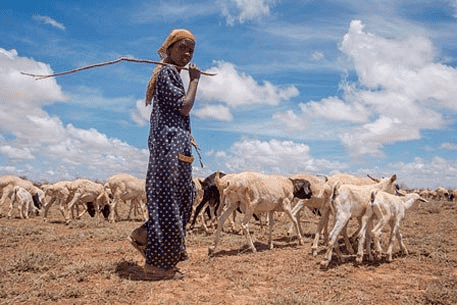
Pastoral community in Kenya at high risk from climate change
- Confinement: Increased vulnerability, leading to cattle losses in severe droughts, with a substantial decline in the Maasai livestock population.
- 1930 Inquiry: Showed the Maasai in Kenya had substantial livestock, but severe drought in 1933 and 1934 resulted in the death of over half the cattle in the Maasai Reserve.
- Grazing Lands: Reduction in grazing lands intensified the adverse impact of droughts, contributing to a steady decline in pastoralists' animal stock.
Not All were Equally Affected
- Impact Variance: In Maasailand, as in other parts of Africa, the impact of colonial changes varied among pastoralists.
- Social Categories: Pre-colonial Maasai society had two main social categories: elders and warriors, with elders in a ruling role and warriors responsible for defense and cattle raids.
- British Measures: The British introduced measures, appointing chiefs for sub-groups, imposing restrictions on raiding and warfare, affecting the traditional authority of both elders and warriors.
- Wealth Disparity: Chiefs appointed by the colonial government often accumulated wealth, had regular income, engaged in trade, and lived in towns, while their families managed the villages.
- Poor Pastoralists: Struggled during wars and famines, losing everything. Many had to seek work in towns, engaging in activities like charcoal burning or odd jobs.
- Social Changes: Occurred on two levels: disruption of traditional age-based distinctions and the emergence of a new divide between wealthy and poor pastoralists in Maasai society.
Let's Revise: How did colonial policies affect the mobility and livelihood of African pastoralists like the Maasai?
 View Answer
View Answer 
Ans: Colonial governments restricted African pastoralists’ movement by confining them to reserves and requiring permits for travel. These restrictions disrupted traditional nomadic practices and trading activities, severely impacting their livelihood and increasing their vulnerability during droughts.
Conclusion
- Global Impact: Pastoral communities worldwide face varied impacts from modern changes.
- Movement Restrictions: New laws and borders restrict pastoralist mobility.
- Grazing Issues: Disappearing pastures and overgrazing lead to deteriorated grazing conditions.
- Drought Crisis: Droughts cause significant cattle losses.
- Adaptation: Pastoralists adjust by changing movement paths, reducing cattle numbers, and seeking rights and support.
- Modern Relevance: Pastoral nomadism is increasingly recognized as viable for many dry and hilly regions.
Difficult Words
- Pastoralists - People who raise livestock and move with their herds in search of fresh pastures.
- Nomadic - Moving from one place to another rather than living in one place all the time.
- Transhumance - The practice of moving livestock from one grazing ground to another in a seasonal cycle.
- Colonialism - The policy or practice of acquiring full or partial control over another country, occupying it with settlers, and exploiting it economically.
- Territories - Areas of land under the jurisdiction of a ruler or state.
- Grazing - The act of animals eating grass in a pasture.
- Subsistence - The action or fact of maintaining or supporting oneself at a minimum level.
- Revenue - Income, especially when of a company or organization and of a substantial nature.
- Commercialization - The process of managing or running something principally for financial gain.
- Fluctuations - Irregular rising and falling in number or amount; variations.
- Encroachment - Intrusion on a person's territory, rights, etc.
- Tribal - Relating to a group of people who are united by ties of descent from a common ancestor.
- Scattered - Spread or thrown over a wide area.
- Perennial - Lasting or existing for a long or apparently infinite time.
- Reclamation - The process of claiming something back or reasserting a right.
- Migration - Seasonal movement of animals from one region to another.
- Subsistence Economy - An economy in which people make just enough to survive and nothing more.
|
55 videos|635 docs|79 tests
|
FAQs on Class 9 History Chapter 5 Notes - Pastoralists in The Modern World
| 1. What is the significance of pastoral nomads in history? |  |
| 2. How did colonial rule impact pastoral life? |  |
| 3. What are some key characteristics of pastoralism in Africa? |  |
| 4. How have pastoralists in the modern world adapted to changing environments? |  |
| 5. What are some challenges faced by pastoral communities in the contemporary world? |  |
















